To get the desired effect, ✨ you need to choose the right background, 🌈 neutralize the shade of the dye 🧴 and only after that start coloring.
Lightening background - what is it?
Each person has his own shade of hair. This color is given to us from birth, it is determined with the help of a pigment - melanin, which develops in hair follicles.
There are two types of melanin in the structure of our hairs:
- eumelanin - matches dark brown and black shades;
- pheomelanin - characterizes red-red hair colors.






These elements can be present in the hair to the same extent, or in the predominance of one of them. Color saturation depends on the degree of predominance. With age, the pigment undergoes a change, so in children the hair is lighter, and in the elderly, the effect of the pigment is noticeably lower.
External factors, exposure to the sun, chemical styling and dyes all affect the change in hair tone and structure.
The lightening background is the color that appears after the partial destruction of the natural pigment, as a result of dyeing and hair bleaching procedures. Atomic oxygen increases the lightness of a part of the pigment, the lightening background is assigned to the hair, which affects the desired effect of the coloring procedure. When receiving a lightening background, the colorist is faced with the task of either neutralizing it or further lightening it.

The speed of appearance of a light tone of a hairstyle depends on their structure and the available pigment on the hair. The process involves several stages, some of them are faster, some are not. So, let's say to lighten black hair, you need to go through all the stages.
REFERENCE! Lightening the pigments of some hair can be very difficult and the process will be slowed down at one stage. In this case, discoloration will be virtually impossible.
Why is it important to define it correctly?
Before dyeing or giving a light shade of hair, it is necessary to identify with the highest accuracy the pigment that will appear after the procedure. If you neglect this step, you may not get the desired effect at all.
And in addition to entail many complications:
- there will be a complete destruction of the pigment - melanin, the appearance of your hairstyle will become much worse;
- staining is uneven and spots appear;
- the shade is different from the desired;
- too dark roots.

In order to avoid undesirable consequences, it is necessary to correctly assign your lighting background. There is an easy way to reveal this: take a clean strand of hair, examine it in the light and pick the most appropriate color from the color card. Then look at the scale from 1 to 10 and pick your tone.
IMPORTANT! When choosing the desired shade, you do not need to look at the color from the color map. The end result will vary depending on the degree of pigment breakdown.
Fundamental rules
The first who created the color wheel and gave it a name was the world famous scientist I. Newton. His system included 7 colors of the rainbow. A little later, Goethe proposed his own version with six shades: the main ones were red, blue and yellow, and the additional ones were green, purple and orange. Itten's 12-color wheel is also known. W. Oswald went farthest, developing a system consisting of 24 colors.
However, all these coloristic "helpers" have similarities:
- the main colors are red, yellow and blue;
- achromatic colors are excluded from the circles.

Let's now talk about how new shades are created and consider the basic laws of mixing in relation to the art of hairdressing.
Tones that are to the right and left of what is at the apex of the triangle will harmonize perfectly with each other.
To neutralize the unwanted discoloration, you need to use the color that is located in the circle exactly opposite it. For example, you got a yellowish tone, which means we look at the diagram and see that there is purple opposite the yellow one. Now it becomes clear why all balms and tint products for neutralizing yellowness have this color.

On the Internet, you can find many tables for mixing paints to obtain a certain tone. We present to your attention one of them.
| Desired color | Colors used to obtain it |
| Reddish chestnut | Red + brown + black |
| Ginger | White + orange + brown |
| Burgundy | Red + brown + black + yellow |
| Crimson | Blue + white + red + brown |
| Plum | Red + White + Blue + Black |
| Chestnut | Yellow + red + black + white |
| Honey | White + yellow + dark brown (chocolate) |
| Chocolate | Yellow + red + black + white |
| Copper gray | Black + White + Red |
| Egg blond | White + yellow + a drop of brown |
| Golden brown | Yellow + red + blue + white |
| Medium brown (light brown) | Yellow + red + blue + white + black |
| Light brown | Yellow + white + black + brown |
| Gray mother-of-pearl | White + black + a drop of blue |

Please note that the table shows a mixture of bright colors to get the colors we are familiar with. The proportions of each of them will vary in each case depending on the client's wishes regarding the saturation of the final color. The selection of 3 main colors from all available colors is explained by the fact that everything around (and the hair is no exception) contains these very colors in the colors.
Only the saturation of each differs. The generally accepted numbering system for color levels looks like this.
- Unit - this is black, ten is the lightest blond.
- 1 to 3 blue is predominant, contains a little red color, there is practically no yellow. The resulting tones: chestnut, dark brown and their shades.
- 4 to 7 the level is dominated by red, and yellow and blue are presented slightly. In this category, you can get many shades of different saturation.
- 8 to 10 yellow comes out on top. Other colors are excluded.


And now we will learn to "read" hair dyes by their numbers. Most often, you can see 1, 2 or 3 numbers on the packaging. Let's give their decryption.


Number 1 means the naturalness of the color and its depth:
- 1 - black;
- 2 - very dark chestnut;
- 3 - dark chestnut;
- 4 - chestnut;
- 5 - light chestnut;
- 6 - dark blond;
- 7 - light brown;
- 8 - light blond;
- 9 - very light blond;
- 10 - almost blond.

Among the manufacturers there are those that produce products with numbers 11 and 12 - they mean decolorizing dyes. If you see only one number on the package, this means that the tone is natural, without impurities. However, most products are numbered with two or three digits.


Number 2 is the main color of the dye:
- 0 - natural;
- 1 - there is blue with an admixture of purple (ash tones);
- 2 - there is a green pigment (matte tones);
- 3 - yellow and orange are present (golden tones);
- 4 - there is a shade of copper (reddish tones);
- 5 - included red and purple (mahogany);
- 6 - there is blue and purple (shades of purple);
- 7 - red and brown ("havana") are present.
Note that 1 and 2 are cold, 3-7 are warm.
Number 3 (if any) indicates that there is one more tone in the dye, however, its amount is half that of the main one.

How is this or that color obtained under the influence of a dye? The fact is that some kind of natural pigment is initially present in our hair (with the exception of albino people). Eu- and pheomelanin are responsible for its saturation. The more eumelanin in the composition, the darker the shade. Coloring compositions contain an oxidizing agent that destroys both types of melanins. Hence, the concept appears - the background of clarification, that is, the final shade obtained as a result of staining.
For a clearer understanding of the term, we will give an example: the curls were discolored and acquired a reddish color, respectively, the background of the lightening was orange.
Below is a table for neutralizing the background lightening.
| Lightening background | Neutralizer | Qty, g |
| Very light yellow | Violet | 0,5 |
| Light yellow | Violet | 0,5 |
| Yellow | Violet | 1 |
| Yellow orange | Blue and purple | 1,5 |
| Orange | Blue | 2 |
| Red-orange | Blue and green | 2,5 |
| Red | Green | 3 |
| Red brown | Not required | – |
| Brown | Not required | – |

Neutralization rules:
- the amount of neutralizing composition is indicated for 60 grams of dye;
- to get green, mix blue and yellow in a 1: 1 ratio;
- 1 gram of composition = 2 cm (when extruded from the tube).

Choice of shades
Surely you already have a question: how to choose a color that is ideal for you? Of course, you can visit a hairdresser, where a master stylist will show you a shade table and, by mixing paints and colors, create a suitable tone for you. However, a more competent specialist will suggest a more difficult path that will lead to a better result.
We are now talking about considering the individual traits of your appearance, each of which will be discussed below.
Color type. Every woman at least once passed tests on the Internet to determine the color type. The result was "autumn", "winter", "summer" or "spring" with the subtype "cold" or "warm". In the same place, most likely, you read recommendations about the selection of a palette of colors in clothes and makeup. But the same applies to the shade of the hair. A competent hairdresser-stylist will be able to determine at a glance who you are by color type, and what will suit you, and what is contraindicated.
When choosing a paint tone on your own, there is a risk of making a mistake.

Age-related changes. Remember the popular belief that "black ages"? In fact, if you are a naturally burning brunette, then he will not be able to age you a priori, since both your skin color and the shade of the iris "work" in tandem with the shade of hair, and even wrinkles are not a hindrance in this case. Any wrong color can visually add age and take away the natural brightness. Therefore, aged ladies are always advised to focus on the natural shade when painting. It is desirable to choose pastel colors without enhanced brightness.
Naturalness and harmony of the image. Continuing the theme of a natural brunette, imagine her dyed blonde! This at least looks strange. Of course, you've probably seen examples like this even among Hollywood stars. But we do not recommend such drastic experiments to you - there is a risk that the result will shock you, and your hair will be damaged.

Hair condition. When changing the color, even by one tone, always take into account the state of your hair now. If the curls are dull, the tips of the hair shafts resemble a brush, they break and look sick - it's time to take care of their nutrition and treatment. Take a course of vitamins, make nourishing masks, cut off the split ends and only after that start coloring.
Maintaining hair color. If a compound mikston was used the first time the hair color was changed, it will be difficult to create it again in the same proportions. Regrown roots will begin to remind you to re-stain. The only way out in this case is to ask the specialist who performed the first procedure to write down the proportional ratio and digital designation of the dyes used.Then, even if you do not have the opportunity to get to the coloring of the same master, you will have a “memo” in your hands, thanks to which any other hairdresser-colorist will mix a suitable mixton.
When dyeing at home with a product from the mass market, your "magic wand" will be saving the box from under the used product and buying the same one later.

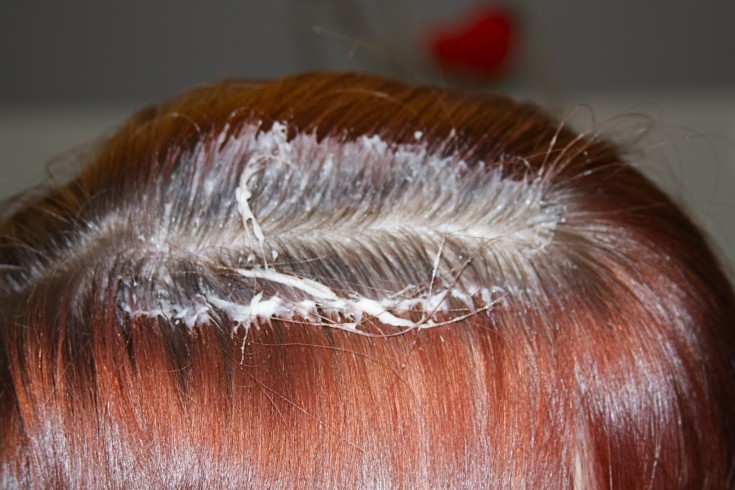
Let's talk about DIY home painting. Many women, when buying ready-made dyes, hope that the final shade is exactly the same as that presented on the package. In fact, this does not always happen. Here you need to take into account the original hair color, whether they were dyed earlier, how much time has passed since the last procedure.
Therefore, the best that can be offered in this case is to consult with a master colorist, he will certainly be able to give you recommendations on choosing a dye, even among the products of the mass market.
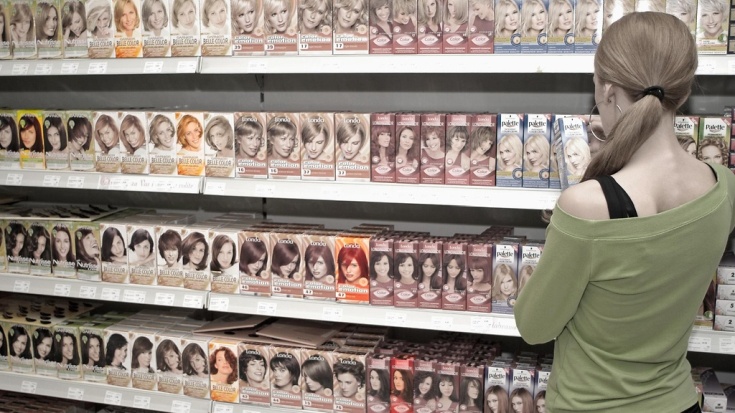

What is a color direction
The color direction is the tint on the curls, manifested as a result of dyeing, do not confuse with the pigment (base color of the strands). For example, a girl with copper curls after painting - copper is considered the direction of color.
A color nuance is an additional shade; it is highlighted in paint cards by a number or letter. In the marking of dyes, the designation of the color nuance appears after the tone depth (8G, 8/41, 9.60). The third digit in the dye marking is an additional color nuance, light overflow.
The palettes of paints from different manufacturers may differ in the designation of the color direction of the selected shade. After the color depth number, you can see not a number, but a letter. This is the initial letter of the shade name in English (the manufacturer's native) language.

Note! Two identical numbers after the shade depth indicate the intensity of the selected shade. For example, 8/44 is intense copper, 8/77 is extra brown.
Coloring is an important science for a hairdresser. Without knowing its basis, it will not be possible to achieve the desired success in staining.
Lightening Background Standardization
In hairdressing coloristics, a standardized system of tone depth levels is used, where there is a clear gradation of natural hair colors (which is described in more detail in the article "The palette of hair colors") In addition to it, each level of tone depth was determined by the corresponding lightening background, which is reflected in more detail in the table below and in the picture.

| Hair color name | Depth of tone | Lightening background |
| Light blond | 10.0 | Very light yellow |
| Blond | 9.0 | Light yellow |
| Light blond | 8.0 | yellow |
| Medium blond | 7.0 | Yellow-orange |
| Dark blond | 6.0 | Orange |
| Light brown-haired (light brown) | 5.0 | Orange red |
| Brown (Brown) | 4.0 | Red |
| Dark brown-haired (Dark brown) | 3.0 | Red |
| Natural Black (Very Dark Brown) | 2.0 | Very dark red (brown) |
| Black | 1.0 | Very dark red (brown) |
Based on this table, all brands teach color correction during lightening and darkening on their own palettes of paints, and although the basis for neutralizing and replenishing the missing pigments were taken standard regularities of color science that can be used. But the peculiarities of pigments, paint formulations, as well as the range of color palettes force each brand to adjust these patterns specifically for their own products, so they make recommendations clearly for themselves, having worked everything out in practice.
As an example, here is a table for neutralizing the lightening background when working with Estel Professional paint

And here is a similar table of the Goldwell brand:
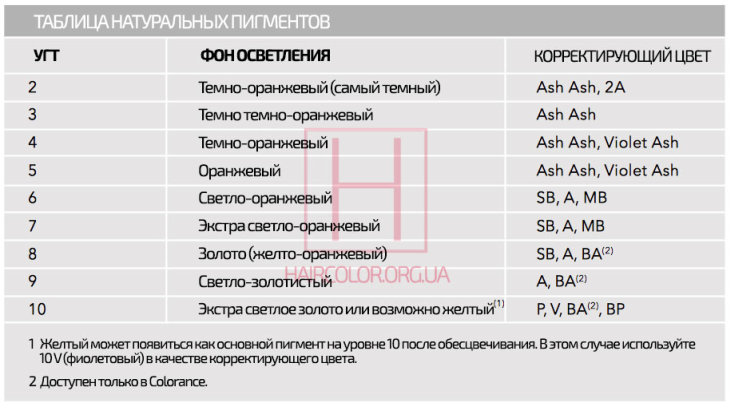
And here brands can recommend using for color correction both individual shades of paints of the main color palette, and special correcting paints or mixtons.
There are similar recommendations for the darkening process. Usually, a prepigmentation procedure is used, the selection of colors for which is based precisely on the lightening backgrounds.
By the way, some brands of cosmetics have gone further and not only show lightening backgrounds in the form of tables in their training, but also make special palettes for the convenience of defining lightening backgrounds by colorists and further work with them.
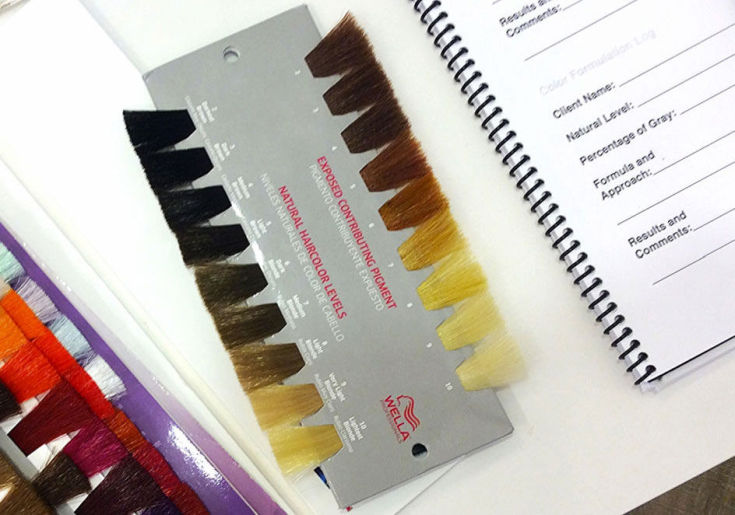
Such assistants are not found in everyone, but they can be found especially in large brands such as Wella Professional, Schwarzkopf Professional, etc.
Fundamentals of color theory
- In coloristics, primary, secondary and tertiary colors are distinguished. This is enough to fully convey the color of the hair.
- There are only 3 primary colors (red, yellow and blue). They cannot be obtained from other colors, they are basic, basic.
- By mixing primary colors, you get second-order colors (so-called secondary). These include: purple is a combination of red and blue, orange is red with yellow, and green is yellow with blue.
- If you mix the secondary colors with the base colors, you get tertiary colors.
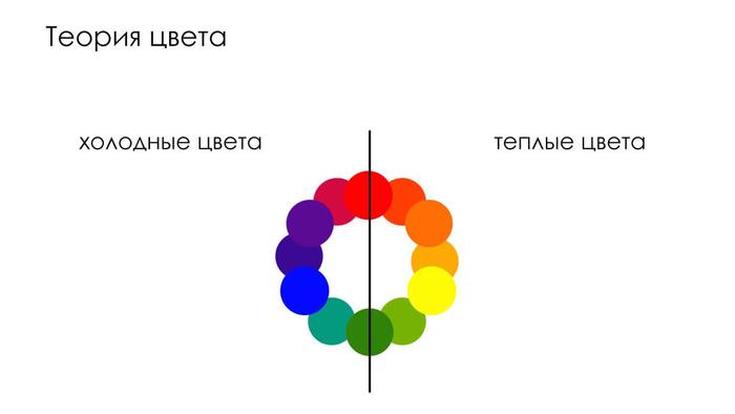
The conventional line separating warm and cold shades passes through green and red, as indicated in the diagram above. Thus, purple, blue are cool tones, and yellow, orange are warm. Green, red are cold and warm.
Remember, working with color when painting strands has its own specifics. Basic rules for combining colors:
- Colors that oppose each other in the color wheel are of the same intensity and are capable of neutralizing each other.
- Warm tones are used to neutralize cold tones, but not vice versa. Adding cold tones to warm tones will result in a messy color.
- If a client with cool colored curls wants a warm tone, neutralize the cold tone first.
- Warm shades standing clockwise one behind the other are compatible.
- Cold shades standing counterclockwise one after another are incompatible.
- It will not be possible to combine warm and cold shades, they are incompatible.
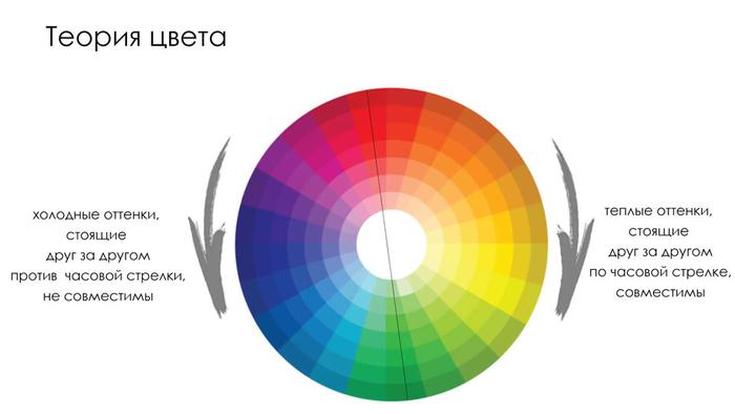
How to combine colors
The colors of the spectrum are displayed in a circle, which is used in basic color theory for hairdressers. It demonstrates how one tone flows into another. It can be used to set how the tone of the hair will look, as well as how to correct unnecessary tones and flawlessly tinted curls.
With the support of the circle, you can achieve optimal color combinations and smoothly transition from one nuance to another.
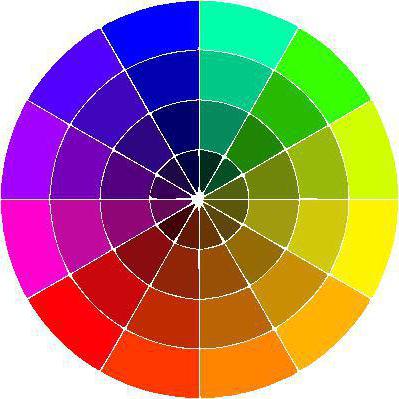
- Red, blue, yellow are key tones.
- Purple, green, orange are secondary.
- Red-orange, red-violet, blue-violet, blue-greenish, yellow-greenish, yellow-orange - tertiary tones.
- Yellow and purple, blue and orange, red and green - neutralize each other.
- Secondary tones are composed of a combination of two key colors. Color theory for hairdressers notes that in order to create minor tones, it is necessary to figure out the midpoint between the two major colors on the color wheel. So, for example, the tone between red and indigo in the color wheel is purple. The color between red and gold is bright orange, and between amber and blue is green.
- Tertiary tones come from combinations of primary and secondary colors. Looking at the color wheel, you can understand that yellow-orange is considered a tertiary color, since it is located between the main color (yellow) and the secondary color (orange).

Color theory for hairdressers shows that neutralizing colors, when combined, tend to form brown. They are in pairs of opposites on the color wheel, thus red and green, blue and bright orange, yellow and lilac. These tones balance each other and can be used to correct coloration errors.
For example, if the tone contains unnecessary crimson tones, then green can be used to neutralize it. Lilac tonics act in a similar way to neutralize yellowness on bleached hair.
It is very important to consider the depth of tone.So, 2 tones should be the same saturation and balance each other.
Let's take a purple toner for bleached hair as an example. If you apply too deep a tone, then the curls will be colored lilac, and if the tone is very light, then the curls will have a yellowish tint. As a rule, it is better to miss the second side, as it is easier to complement the tone than to pick it up.

Also mixing two neutralizing colors like red and green produces brown.
Correctors
Almost all professional lines have special correcting paints in which only one pigment is present: red, blue, yellow, or a mix of them. They blend perfectly with the main palette and help the master to "collect" the desired color from several shades, taking into account the background of the lightening.
- Have Vella the Special Mix line contains orange, red, blue and gray pigments, with which it is easy to correct basic tones.
- Have "Londa" there is a whole palette of mixtons, which includes a variety of shades - from matte blue to red-purple. Its additional advantage is the presence of a neutral tone, which allows you to make any color softer, more pastel.
- Have "Matrix" the palette of basic tones is very rich, and all the pigments necessary for correction have already been added to it. Such paint can also be used by non-professionals, if you choose the right shade exactly.
- Have Estelle the Deluxe line contains as many as six bright shades of corrector from gold to deep purple, plus one neutral. Taking into account the widest basic palette, this allows you to create an unlimited number of colors and find the perfect shade for any woman.
- Have "Senko" bright clean tones that can be used for correction are present in the Color Vibration line. It's nice that this manufacturer also has a special cocktail that neutralizes pigment residues after using the wash.
There are similar products from other manufacturers of high-quality hair dyes. Remember that it is unacceptable to mix pigments of different brands and even lines. Their chemical composition is different and the staining result can be unpredictable.

Important warning
- Experienced hairdressers strongly advise against experimenting with professional proofreaders at home. It only seems that the whole color scheme fits into Oswald's circle. In fact, there are many subtleties that good hairdressers attend special seminars to learn.
- Correctors are added to the basic tones in very small quantities. Overdo it a little and the color of the paint will change significantly. Moreover, the colorist always takes into account the condition of the hair. With their strong porosity, the color will lie down and wash out unevenly. Therefore, a knowledgeable master will never apply bright and juicy unnatural shades to them.
- At home, it is easier and safer to carry out color correction after lightening or staining, using tint balms and shampoos. Even if the experiment fails, the unwanted shade will wash off several times and you can try other proportions. But remember that toning agents must be kept on the hair for at least 3-5 minutes so that the pigment has time to fix.

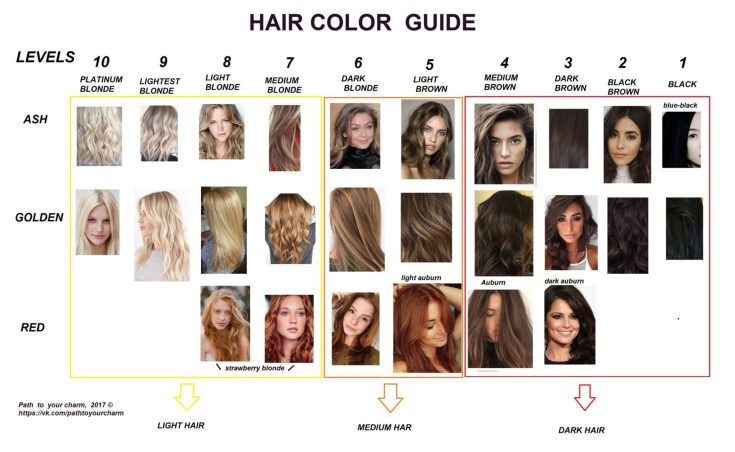
Conclusion
To get the desired effect, you need to choose the right background that neutralizes the shade of the dye, and only then proceed to staining. Compliance with this rule will help not only to achieve the desired shade, but also to minimize the harm caused by oxidizing and coloring agents.
